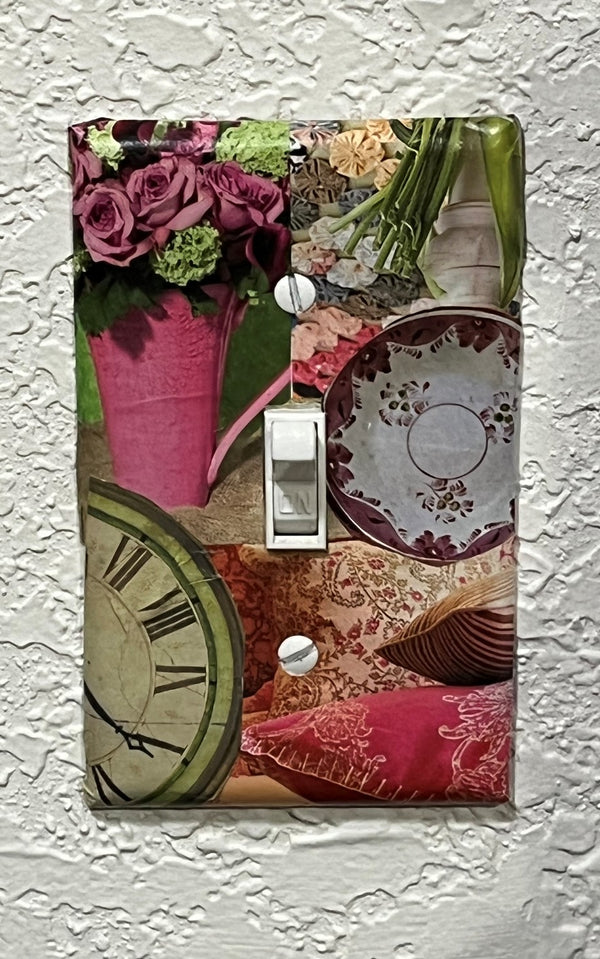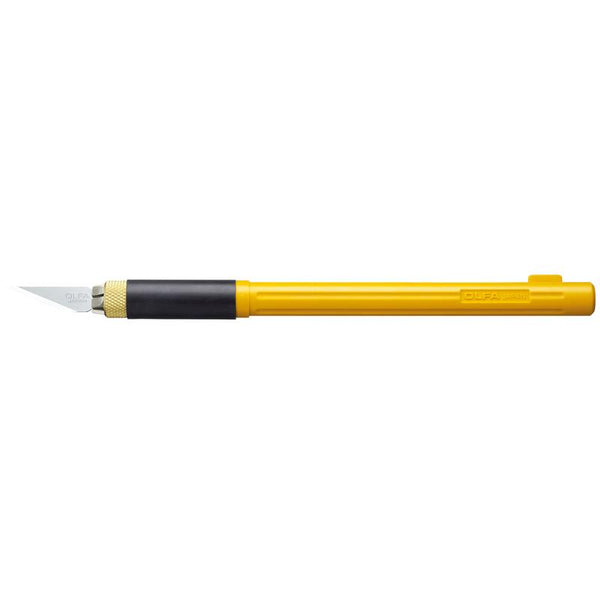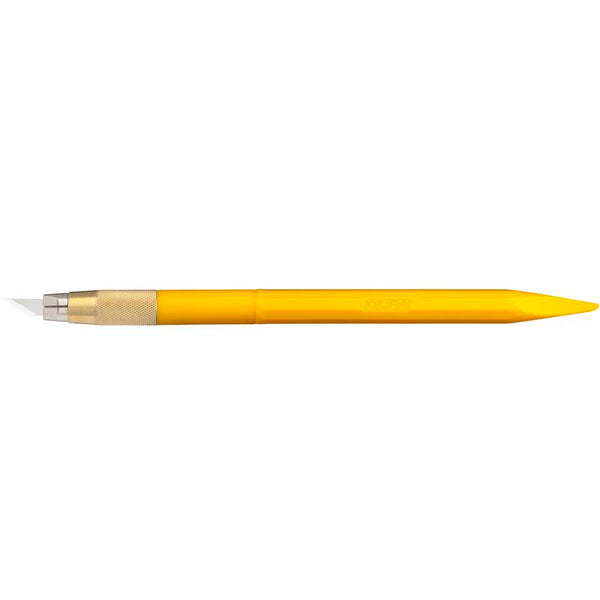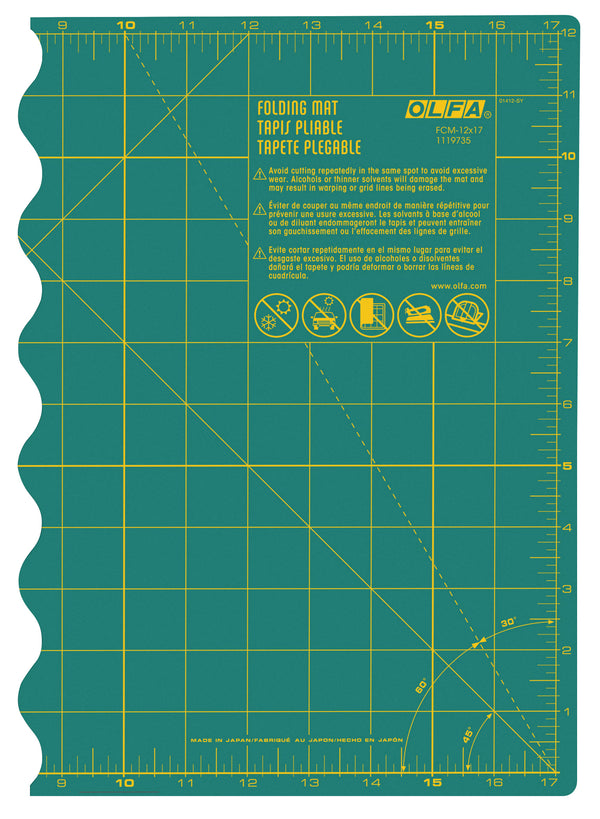
Collaged Switch Plate Covers

Designer: Scott Hansen
Skill Level – Simple
----------------------------
When Yvonne at OLFA asked if wanted to try out some tools that I hadn’t worked with before from OLFA, I decided that could use some of their great utility/craft blades. I chose the AK-4 and AK-5 art knives. The AK-4 is like a cool pen knife and the AK-5 is larger like a normal craft knife. Both are VERY Sharp and come with very useful protective covers and extra blades. They work best on a folding OLFA mat (FCM-12x17) which is nice and thick and can absorb the cutting really well.
And for my project with these tools, I chose to cover some light switch covers for the light switches in our new house. Many years ago I collaged this switch cover at our old place:
Our new house was renovated by a house-flipper, and EVERYTHING inside is WHITE WHITE WHITE. So those who know me, know that is a bit too little color for me. We didn’t have time to repaint before we moved in and now we are concentrating on the garden which was also a very blank slate. But I thought I could create more of these little switch plate cover Works of Art here and there.
So let me tell you about how I went about creating some new ones for this place. First here are two ‘live’ samples of what we are starting with:
So I start by taking the screws out and taking the covers off of the light switch. Be Safe here and don’t go sticking anything back in those wires. As long as you leave that switch alone it will be fine. Be sure to not have small or large curious children around when you do this.
Now we have two switch plate covers (screws are put in a safe secure place until you put them back in place when you are finished).
Here are the tools I used:
- OLFA AK-4 Cushion Grip Art Knife
- OLFA AK-5 Designer Graphic Art Knife With 30 Replacement Blades
- OLFA FCM-12x17 12" X 17" Folding Cutting Mat
- Alene’s Clear Gel Tacky Glue
- Plaid Brand Clear Acrylic Sealer (Any clear sealer really would be fine, Elmer’s glue probably would have also been fine.)
- Inexpensive artist brush and a jar of tap water.
-
And then here are the colorful supplies – multiple magazine clippings and various ephemera including used stamps, ticket stubs, copies of vintage photos, and other various paper bits.
I started by just picking elements that I thought would be fun together. Really ANYTHING made from pliable paper goes for this. You just want to have an assortment cut out and then you can pick from them as you go. The AK-4 worked great for trimming some elements because it basically held like a pen and you can just ‘draw’ cut around shapes as you will see later.
I found that it was easiest to put a little glue on the switch plate cover in sections and then use some water on a cheap paintbrush to smooth the glue out. Sometimes I brushed a little on the back of paper bits too, particularly on the edges.
I thought myself brilliant when I propped the switch plate cover on an old wooden spool. It worked good for keeping the glue off of fingers a bit, but was a little bit of a balancing act.
Here is the first plate I did with a bit of a concentrated color story in pink and green. I just covered all of the holes – the hole for the switch and the screws. The AK-4 Art Knife helped me cut the clock and plate out nicely to layer them over the larger background pieces I glued on first.
The key is to just glue one quadrant at a time and layer as you need cover the whole plate. If the paper bit didn’t seem to quite stick down, I just added a little more glue on top and then brushed it smooth with a little bit of water.
Basically this is the same concept as ModPodge, but I just wasn’t using that brand.
Once this all dried, I turned it over to the back. You can see how some of the paper bits wrapped around to the back. Some came right to the edge but most of it overlapped.
This is where the bigger AK-5 Art Knife came in handier. I just use this knife to cut the paper off of the edges on the back side so that only the original plastic is facing your wiring. I am no expert on wiring, but it seems like a bad idea to have any paper back there near the wiring.
I also cut out the hole for the light switch and then poked the blade through the screw holes so I could find them later when it was time to put the cover back on the switch.
Then I did the same thing with the double light switch cover I worked on.
On this one you can see that I did a bit more layering with a few more detailed cut-outs using the AK-4 landing on top of the collage, including the Lego MiniFig Raccoon on the left and my sister Cindy and cousin Becky from Easter 1968 on the right. Also included on this one are stamps and a fortune from a fortune cookie.
This picture shows the second cover drying on some spools, some cutouts that didn’t make the ‘cut’ and the cap of the AK-5 and the tip of the handle of that same knife.
Here’s the back of the second plate with some edges that still need cutting, including a circular bit that I glued up to cover the corner on the front. After it dried, I just slid the flat side of the AK-5 blade along the edge and all that 3-D action just sliced right off. Note: I slid the blade AWAY from myself for safety reasons of course.
Once they were dry and trimmed up, I took them out on our covered porch on a paper towel and gave them a couple of coats of the spray sealer to seal it all in place and protect the art from the wear and tear of hands brushing over them daily. Not like we have a lot of wear and tear on our switch plates. But if you have little kids, those switch covers see a lot more action.
So here are the finished light switch covers back on the wall. I feel like they look like little works of art and are so much better than plain white covers. Even if the walls are still all white.
Two down, probably twenty more to go. But honestly these two just took me one evening. Waiting for glue and sealer to dry takes the longest time. Sure looks great when they are done though.
Hope you enjoyed this little tutorial and feel ready to create your own little utilitarian pieces of art in your home.



























